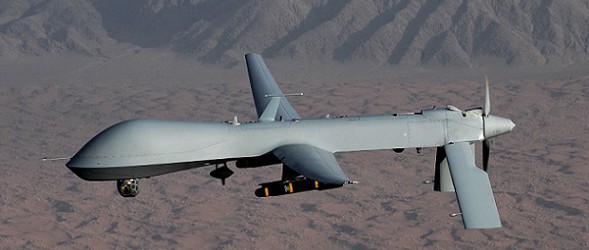The term correlation is a frequent concept in examining the posture of mutual relationships. According to business intelligence analytical glossary, correlation is “a statistical measure that indicates the extent to which two or more variable fluctuate together”. However, this could be positive correlation which indicates the extent to which one variable increases as the other also increases and negative correlation which states that there is a variable increasing while the other decreases. When the fluctuation of one variable (US air carriers) reliably predict a similar fluctuation in another variable (US global power), there is often a tendency to think that a change in one causes a change in the other. Correlation in other words does not imply causation.
Subsequently, the US aircraft carriers have evolved from converted cruisers to nuclear-powered warships that carry numerous fighter planes, strike aircraft, helicopters and other types of aircraft. There is no single definition to aircraft carriers and modern navies use several variants of the type. These variants are sometimes categorized as sub-types of air craft carriers and sometimes as distinct types of aviation capable ships.
Aircraft carriers may be classified according to the type of aircraft they carry and their operational assignments. Admiral Sir. Mark Stanhope, former head of the Royal Navy, has said that “To put it simply, countries that aspire to strategic international influence must have air craft carriers”. A careful historical observation however reveals that there has been a positive correlation between the US global power and her aircraft carriers. From the early years of American isolation policy in 1815, to this day, even with the policy of association.
However, the ability of the USA to apply all or some of its elements of national power – political, economic, information or military – to rapidly and effectively deploy or sustain forces in and from multiple dispersed locations to respond to crises, to contribute to deterrence and to enhance regional stability. As distance between a fighting force and its command and control inevitably becomes more difficult, modern-day power projection often makes use of high-tech communication and information technology to overcome this difficulties. A process sometimes described as the “Revolution in Military Affairs”- a debate that focused more on network centric warfare which is a debate that aims to develop all troops in the battle field developed long before 1991.
Advanced versions of RMA also incorporate other sophisticated technologies, including unmanned aerial vehicle (UAV’s), nanotechnology, robotics and biotechnology. While a few air powered crafts like drones, weapons like intercontinental ballistic missiles are capable of projecting deadly force in their own right; most discussions of power projection revolve around issues of military logistics – the ability to integrate naval and air forces, with land armies as part of warfare.
In most instances, this is generally viewed as key aspect of power projection; aside from sea lift, air lift capabilities allow a country like US to speedily deploy units of soldiers or weapons to distant destinations not easily accessible by land forces. The aircraft carrier battle group, strategic bomber, ballistic missile, submarine and strategic airlifter are all example of power projection platforms. Military units designed to be light and mobile, such as airborne forces (paratroopers and air assault forces) are utilized in power projection.
Most US aircraft carriers are warships with full flight deck and facilities for carrying, arming, deploying and recovering aircrafts that serve as a seagoing airbase. Typically, it is a capital ship of fleets which allows the US Navy to project air power world wild without depending on local bases for staging aircraft operations. The US has ten large nuclear-powered carriers known as super carriers, carrying up to ninety aircraft, and the largest air lifter in the world as well as super carrier fleet. The US Navy has 9 amphibious assault ships used primarily for helicopters. This can also carry up to twenty five jets and in some cases are as large as some other nation’s fixed-wing carriers.
Furthermore, a fleet carrier is intended to operate with the main fleet and usually provides an offensive capability. These are the largest carriers, capable of fast speed. By comparison, escort carriers were developed to provide defense for convoys of ships. They were smaller and slower with lower number of aircraft carried. Most were built from mercantile hills, designed to deploy alone and provide offensive weaponry and heavy offensive missiles equivalent to a guided missile cruiser in addition to supporting fighter and helicopters.
Consequently, a consistent rise in global power has also been consistently the result of a corresponding rise in technology leading to the production of worlds modern and super air carrier giving the US access to play major role in world affairs. In other words, a rise in global dominance resulting from a major success in wars, like; Spanish American war of 1898, Cold War of 1961-1992, more recently; the US led intervention in Afghanistan, Iraq and NATO bombing of Yugoslavia and partially Libya were significantly made possible by the US aircraft carrier fleet. This also parallels the re-organization and expansion of the US diplomatic apparatus for foreign affairs world wild. For instance, the US Department of state had 82 personnel in 1898, in 1910 they had 234 personnel and today the number has risen to 31,000 Foreign Service national employees to cover for the newly created divers’ global responsibility.
Emeka David Chidiebere
Girne Amerikan University (GAU) student
REFERENCES
– Ferguson Niall (2008), “Empire; The rise and Demise of British world order and the Lessons for global power”.
– USA Department of Defense (2013), “Dictionary of Military and Associated Terms”.
– The Land Gazette (2012), No. 19930, pp. 2990-2991.
– Business Intelligence Analytic Glossary (2012).
























































